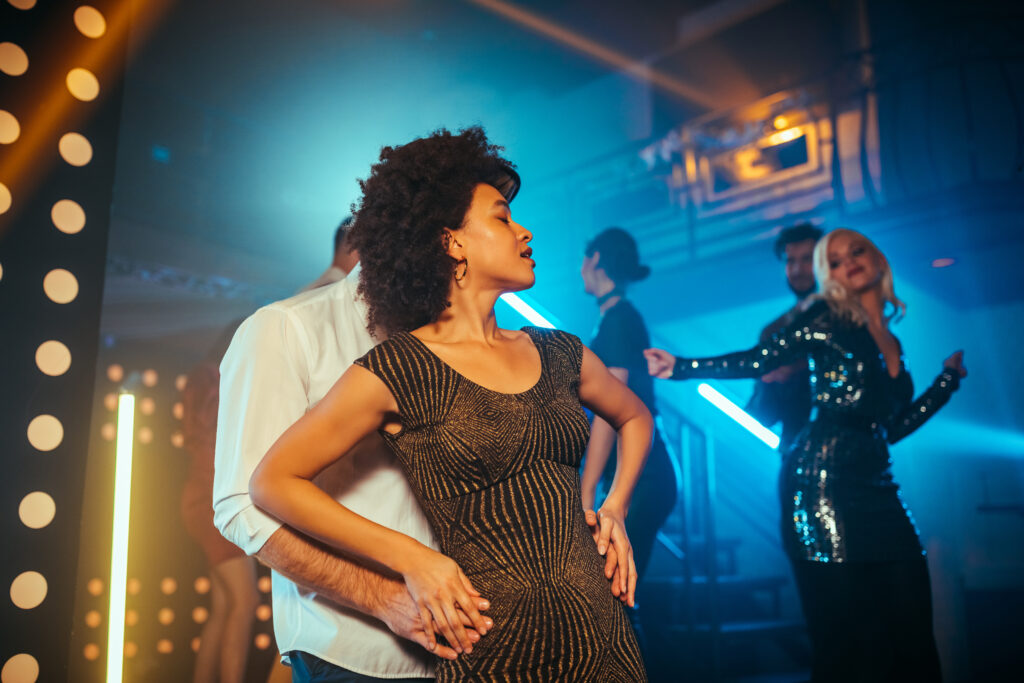In recent years, the world has been captivated by the rhythmic and vibrant movements of salsa and bachata dance. Originating in Latin America since the 1960’s, these popular partner dances have transcended borders and gained immense popularity on a global scale. Salsa and bachata social dance communities have emerged all over the world, attracting individuals from diverse backgrounds who are united by their love for these exhilarating dances. For those who live in and around the Bay area, salsa dancing in San Francisco, CA is where it is at. In this blog, we will explore the increasing popularity of salsa and bachata for social dance by delving into their cultural significance, health benefits, social aspects, and how they continue to evolve as an inclusive form of expression for enthusiasts worldwide.
The Cultural Significance of Salsa and Bachata Dance
Salsa and bachata, which serve as powerful means of self-expression that transcend language barriers and connect people on a deeper level, have their own and somewhat similar origin stories. Salsa is a form of Latin dance that is associated with the music genre of the same name. First popularized in New York City, salsa is a mixture of Cuban dances including mambo and rumba, along with American dances like swing and ballroom. Similar to several other forms of Latin dances, salsa can trace its roots back to Cuba, where it is widely accepted that early radio is responsible for American artists starting to incorporate elements of Latin American rhythms into their own music and later into their own styles of dance.
Bachata, which is a social couple dance with a lead and follow that can be performed in open, semi-closed or closed position, incorporates turns and hand movements from other ballroom dances such as salsa or cha-cha. From the late 1990s, dancers in the Western world began creating unique dance forms inspired by bachata music. The original social dance was created in the Dominican Republic during the 1960s and was danced only in closed position like the bolero dance.
Thanks to the origins of salsa and bachata, these dances allow individuals to celebrate their heritage by embracing the traditional rhythms, movements, and music associated with these dances. They provide a platform for communities to preserve their cultural identity through various events, festivals, and performances.
Beyond the celebration of culture, salsa and bachata also foster social bonding among dancers. These partner dances require synchronization between two individuals who communicate through non-verbal cues on the dance floor. Such interactions enhance interpersonal skills while building trust and cooperation within the community.
The Social Aspects of Salsa and Bachata Dance Communities
Salsa and bachata dance communities have become vibrant social circles. These communities provide a welcoming environment for individuals from diverse backgrounds to interact, connect, and form lasting friendships. Through sharing the common passion for salsa and bachata dancing, a sense of camaraderie that extends beyond the dance floor is developed. Ultimately, everyone is encouraged to contribute their unique style, allowing for a rich cultural exchange at the dance club.
In summary, salsa and bachata dance communities offer more than just an opportunity to learn captivating dance styles; they provide a space where individuals can forge genuine relationships while improving their physical fitness as well as mental health — all within a supportive community vibe.
The Health Benefits of Salsa and Bachata Dance
Salsa and bachata dance offer a multitude of health benefits that go beyond just having fun on the dance floor. Here are some reasons why dancing these Latin rhythms can improve your physical and mental well-being:
- Boosts cardiovascular health: Both salsa and bachata dances require continuous movement, which helps raise your heart rate and improve blood circulation. This aerobic exercise is excellent for maintaining a healthy cardiovascular system.
- Enhances coordination and balance: Dancing these energetic styles enhances coordination as you follow intricate footwork patterns while syncing with your partner’s movements. These coordinated steps also help improve balance, making it an excellent activity for people of all ages.
- Stress relief through music: The rhythmic beats of salsa and bachata create an immersive experience that allows you to escape daily stressors. Dancing can be a form of therapy, providing an outlet to release tension, elevate mood, reduce anxiety, and increase overall happiness.
Both salsa and bachata are more than just casual hobbies; they contribute positively to both body and mind. Going out dancing with friends, even making it a weekly tradition, can lead to improved physical fitness levels while bringing joy into your life. So put on those dancing shoes, get moving, and reap the many benefits this vibrant dance culture has to offer.
Invite Your Friends for Salsa and Bachata Dancing at Dance Fridays
After moving our dance parties to Space 550 in 2015, Dance Fridays came to fruition as a premier Salsa and Bachata nightclub. At Dance Fridays, we provide a unique blend of top-notch DJs, professional instructors, and a welcoming atmosphere to ensure that each guest has such a memorable experience that they keep coming back every Friday. Our focus on customer satisfaction has made us a popular destination for dancers of all levels. Our team comprises experienced instructors and DJs who are dedicated to providing an exceptional experience. Whether you’re a seasoned dancer or a beginner, we are here to help you learn and enjoy the art of Salsa and Bachata dancing. Get your tickets today and we will see you on the dance floor! You can also contact us for more information!
